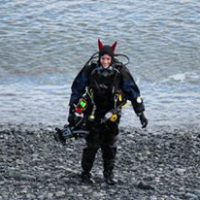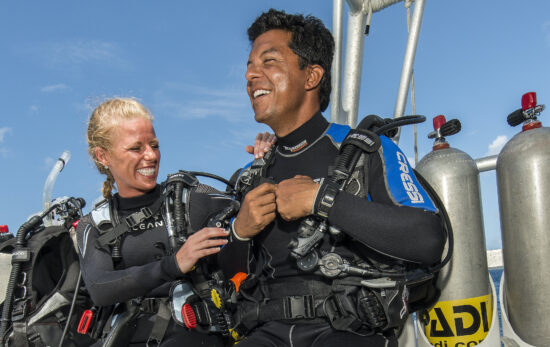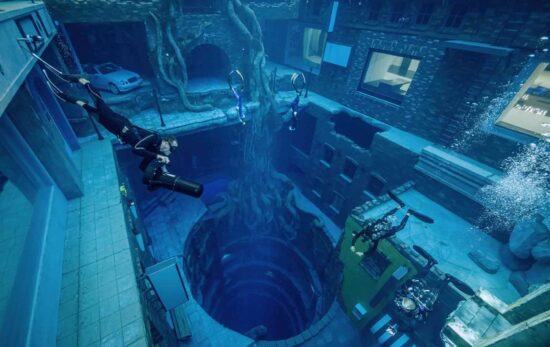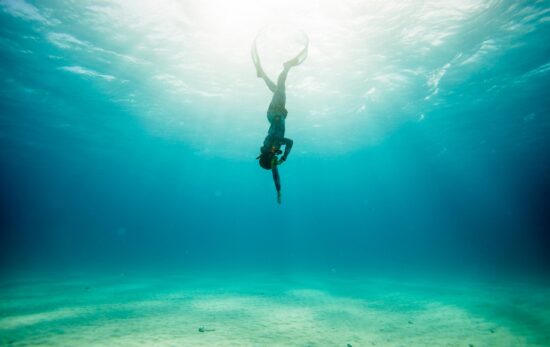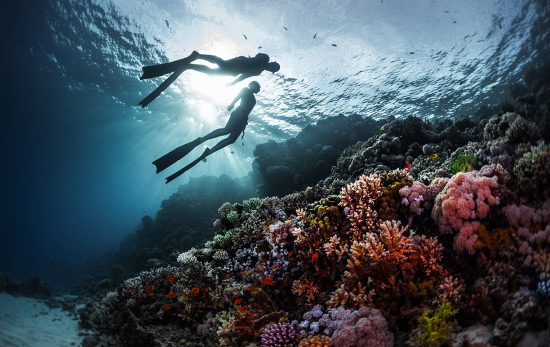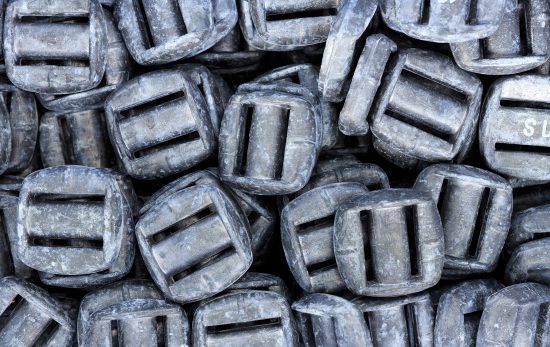Unlike scuba fins, which are designed to propel divers with heavy gear, freediving fins are crafted for breath-holders: converting every bit of energy into power with as little effort as possible.
One clear difference is the fin length and flex, presenting an iconic shape, but there are other considerations too, from pockets to material:
Length
Freediving blades typically measure around 31-38 inches (79-97cm). This extra length provides a bigger surface area, displacing more water and giving more ‘snap’ with every flex — meaning more power with every stroke.
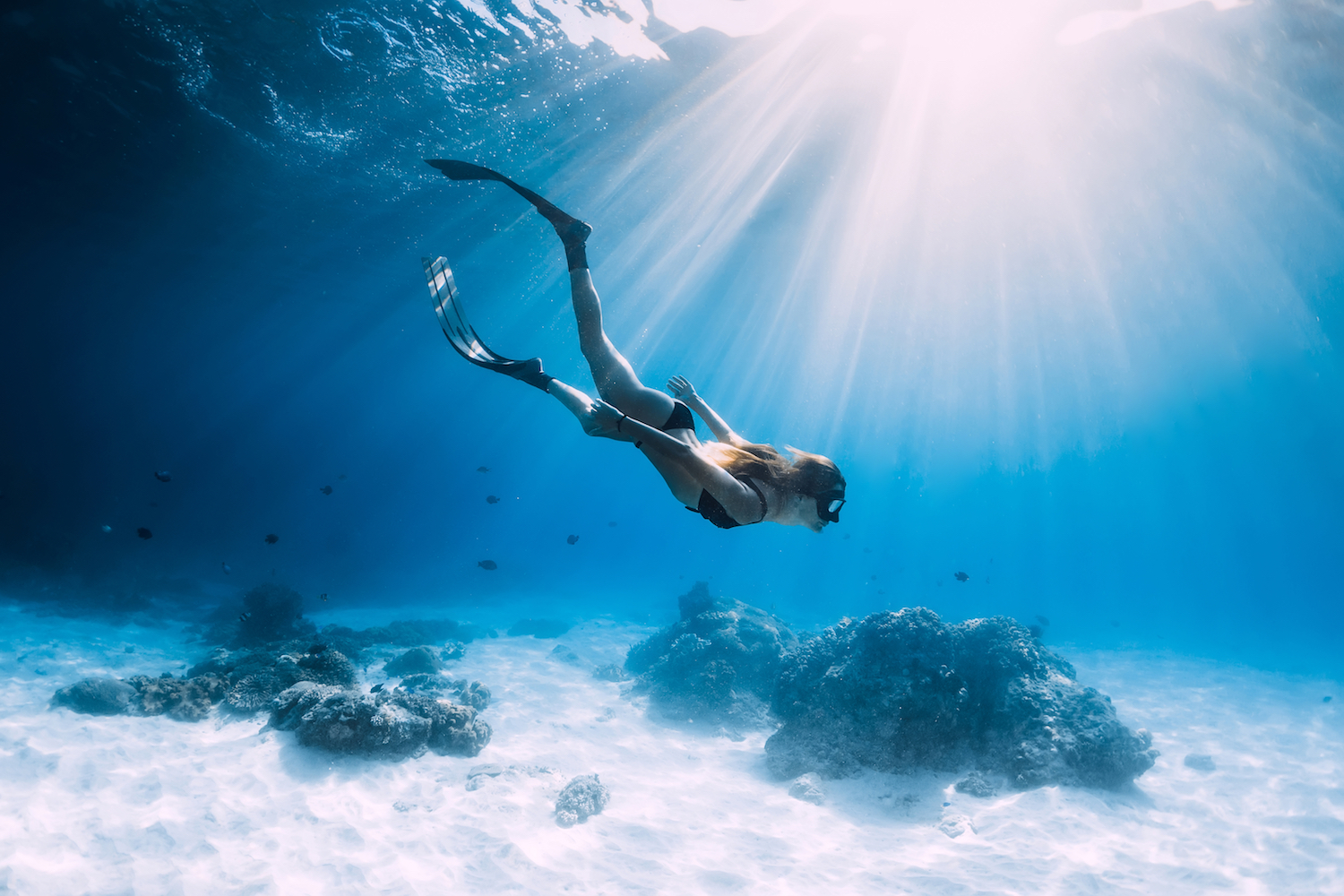
Flexibility
Stiff fins can be more powerful, but only if you’ve got the skills and muscles to support them. A good rule of thumb is to start with softer fins while learning, then consider a stiffer fin once you’ve developed your technique and leg strength.
Material
There are three main types to choose from:
- Plastic is cheaper and highly durable, but loses shape over time. Although it’s the least powerful (it has less snap on each kick) it’s a great option for beginners.
- Fibreglass offers a good middle ground; it’s more efficient than plastic, and less fragile than carbon, with an intermediate price tag to match.
- Carbon fibre is extremely lightweight and has the best snap, making it the choice for professionals and deeper freedivers. But it’s also expensive and very fragile, so take care when travelling, or freediving in shallower, rocky areas.
Foot pockets
Your feet should fit snugly, with no gapping or movement, to maximise the energy transferred with every kick. For that reason, choose full foot pockets — not the open-heel styles worn in scuba. Softer rubber is kinder if you’re freediving barefoot.
Always check sizes, as some size charts assume you’ll be wearing socks. If the pockets are too small, they’ll rub and cause cramps; too big and you’ll lose power (or worse, your fins!)
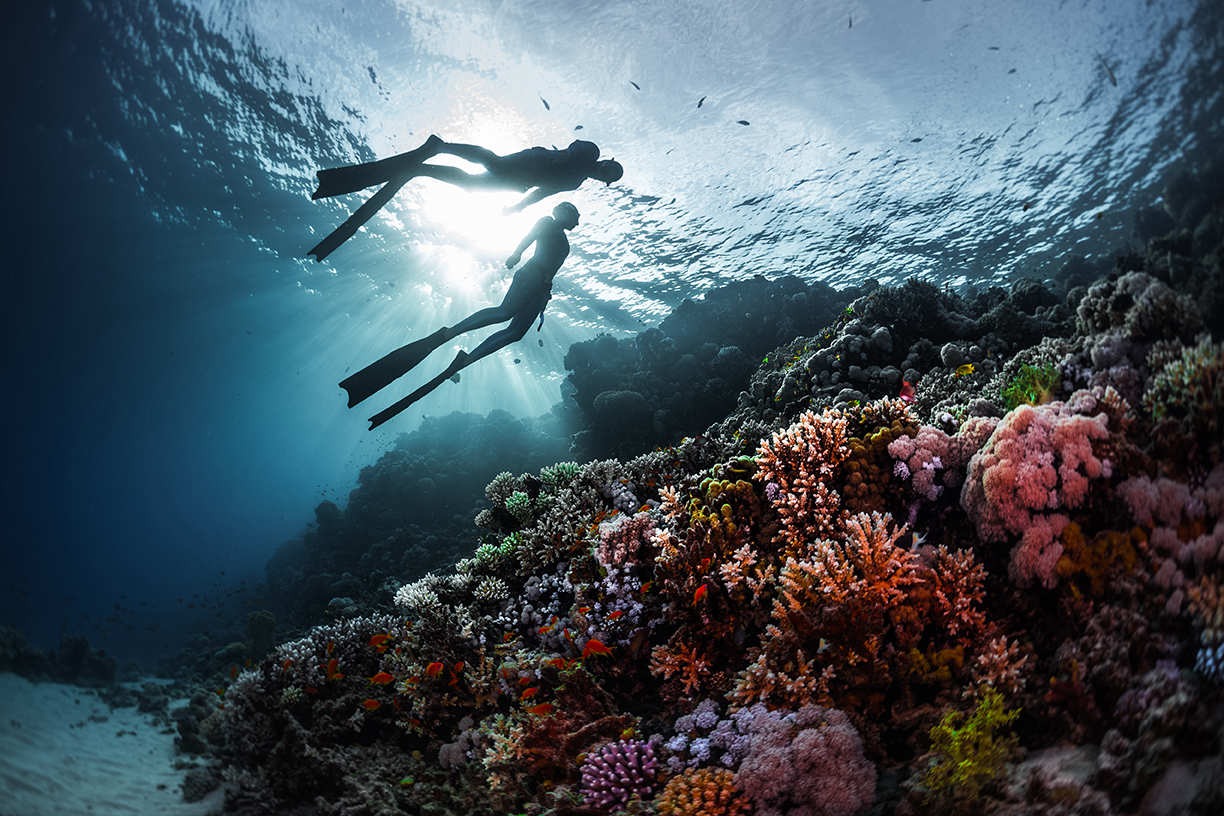
Socks
Freediving socks can protect against rubbing, stings and scrapes — and they’ll keep you warmer. The water temperature should determine the best thickness, but remember this may change the foot pocket size you need.
Integrated or separate?
Integrated foot pockets and blades are permanently fixed together (like standard scuba fins). In freediving, it’s possible to have separate, detachable foot pockets and blades which can be screwed (or glued) together. This has many benefits:
- They’re easier to travel with (remember, freediving fins are much longer)
- If one part needs replacing or upgrading, it’s cheaper than buying the whole thing
- You can adapt your setup more easily for different climates or freediving styles
- It’s possible to try or share blades between friends to save costs
The downside is that the extra fixings can make them less convenient, heavier, bulkier, and may reduce power.
One or two blades?
A monofin is a single fin blade with two foot pockets, turning your bottom half into something akin to dolphins, whales and mythical creatures. They offer high efficiency and speed for freediving disciplines such as Dynamic With Fins or Constant Weight, making them popular with professional and competitive freedivers. However, as these can be tricky to fit and require the dolphin-kick finning technique, they need a little more experience and practice to use.
Bi-fins (dual fins) are simply two fins, like in scuba. There are many (often cheaper) options, and they’re easier to use with different fin kicks whilst also keeping your hands free. This makes them more agile than monofins, especially in smaller spaces, so they’re a better choice for beginners and recreational freedivers.
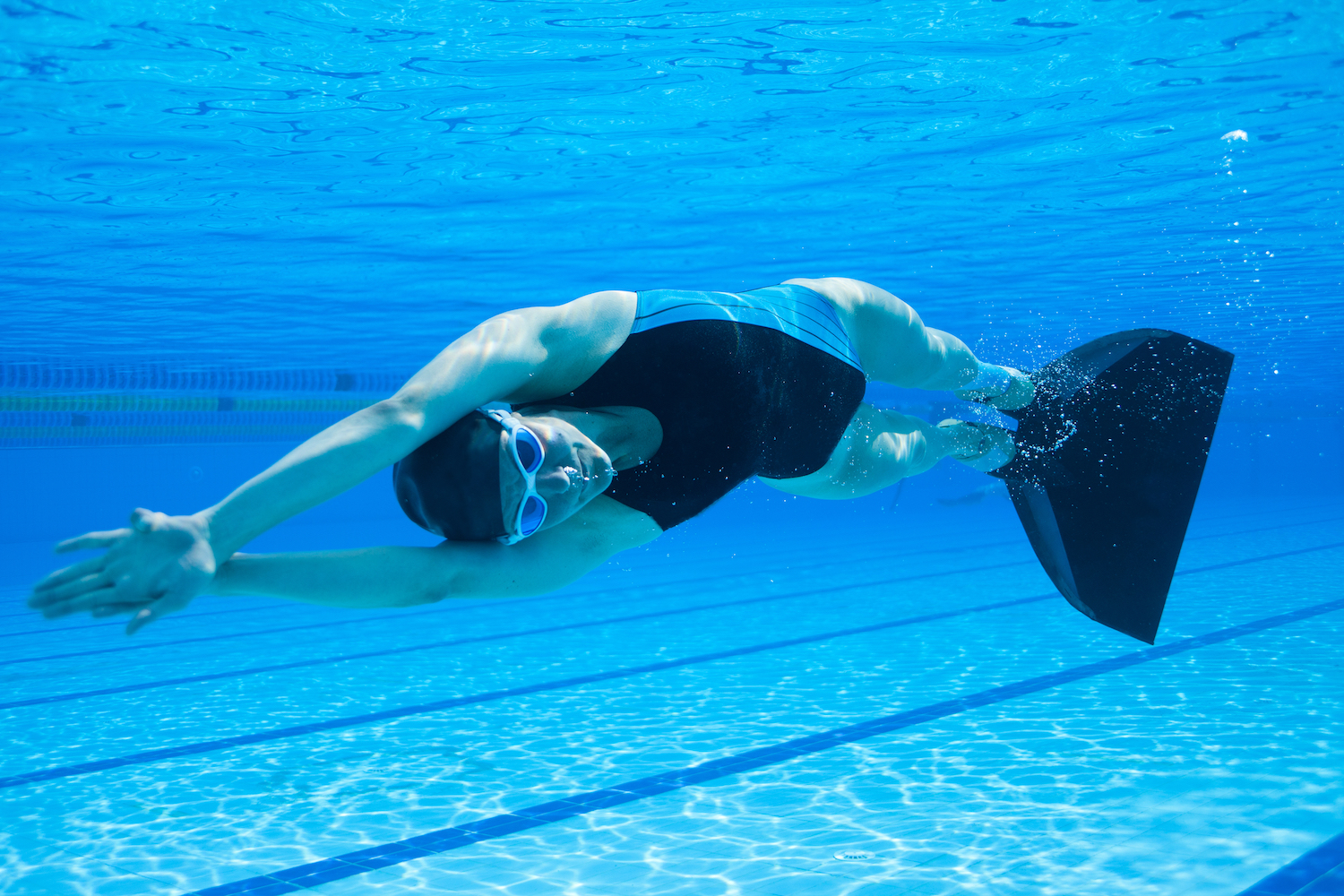
And finally…
Don’t rush out and buy the highest spec fins because your favourite professional wears them — chances are, you won’t get the results you expect.
Instead, your choice should be guided by your personal strength, ability, and technique, as well as the type of freediving you want to do, where you’ll be doing it, and your budget. Over time, these things can change — and so too will the best style of fin for you.
Do try out different options before deciding what to buy; ask your freediving friends or visit a PADI Dive Shop or PADI Freediver Center to get started!
